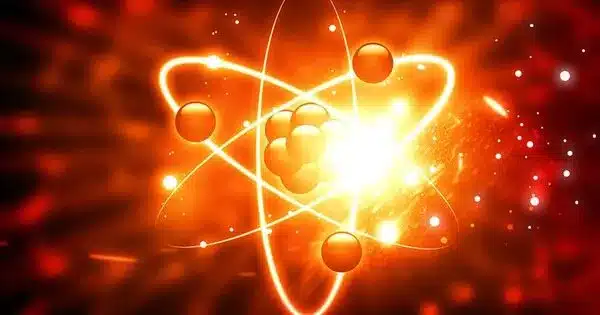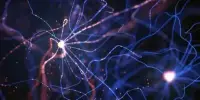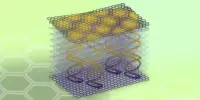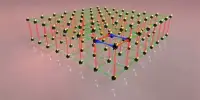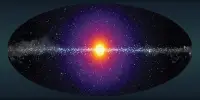Nuclear fusion is the process by which two atomic nuclei combine to form a heavier nucleus, releasing enormous amounts of energy. This is the process by which stars, including our sun, are powered. Vortex rings are not directly involved in nuclear fusion reactions, but they can have implications for the overall behaviour of the plasma and energy confinement.
Understanding how swirling, ring-shaped disturbances, known as vortex rings, form could aid nuclear fusion researchers in compressing fuel more efficiently, bringing it closer to becoming a viable energy source.
The model developed by University of Michigan researchers could aid in the design of the fuel capsule, minimising the energy lost while attempting to ignite the reaction that causes stars to shine. Furthermore, the model could aid other engineers who must manage fluid mixing after a shock wave passes through, such as those designing supersonic jet engines, as well as physicists studying supernovae.
“These vortex rings move outward from the collapsing star, populating the universe with the materials that will eventually become nebulae, planets and even new stars and inward during fusion implosions, disrupting the stability of the burning fusion fuel and reducing the efficiency of the reaction,” said Michael Wadas, a doctoral candidate in mechanical engineering at U-M and corresponding author of the study.
Our research, which elucidates how such vortex rings form, can help scientists understand some of the most extreme events in the universe and bring humanity one step closer to capturing the power of nuclear fusion as an energy source.
Michael Wadas
“Our research, which elucidates how such vortex rings form, can help scientists understand some of the most extreme events in the universe and bring humanity one step closer to capturing the power of nuclear fusion as an energy source,” he said.
Atoms are pushed together until they merge in nuclear fusion. This process generates many times more energy than fission, which is used to power today’s nuclear plants. Researchers can create this reaction by fusing forms of hydrogen into helium, but much of the energy used in the process is currently wasted.
Part of the issue is that the fuel cannot be compressed neatly. Instabilities cause jets to form that penetrate the hotspot, and fuel spurts out between them – Wadas compared it to squeezing an orange with your hands, and how juice leaks out between your fingers.
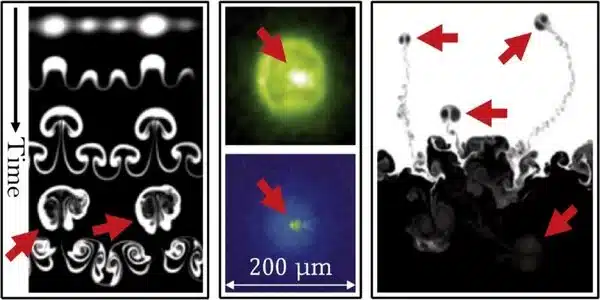
The researchers discovered that vortex rings that form at the leading edge of these jets are mathematically similar to smoke rings, eddies behind jellyfish, and plasma rings that fly off the surface of a supernova.
A spherical array of lasers all pointing towards a spherical capsule of fuel is perhaps the most famous approach to fusion. This is how experiments are set up at the National Ignition Facility, which has set numerous energy output records in recent years.
The laser energy vaporises the layer of material surrounding the fuel, resulting in a nearly perfect, lab-grown shell of diamond in the latest record-setter in December 2022. When that shell vaporises, the carbon atoms fly outward, driving the fuel inward. This causes a shockwave, which pushes the fuel so hard that it fuses.
While the spherical fuel pellets are among the most perfectly round objects ever created by humans, each has a design flaw: a fill tube through which the fuel enters. This, like a straw stuck in a crushed orange, is the most likely location for a vortex-ring-led jet to form when compression begins, according to the researchers.
“Fusion experiments happen so fast that we really only have to delay the formation of the jet for a few nanoseconds,” said Eric Johnsen, an associate professor of mechanical engineering at U-M, who supervised the study.
The study brought together the fluid mechanics expertise of Wadas and Johnsen as well as the nuclear and plasma physics knowledge in the lab of Carolyn Kuranz, an associate professor of nuclear engineering and radiological sciences.
“In high-energy-density physics, many studies point out these structures, but haven’t clearly identified them as vortex rings,” said Wadas.
Knowing about the extensive body of research into the structures observed in fusion experiments and astrophysical observations, Wadas and Johnsen were able to draw on and extend that existing knowledge rather than attempting to describe them as entirely new features.
Johnsen is particularly intrigued by the possibility that vortex rings could aid in the mixing of heavy and lighter elements when stars explode, as some sort of mixing process must have occurred to produce the composition of planets such as Earth.
